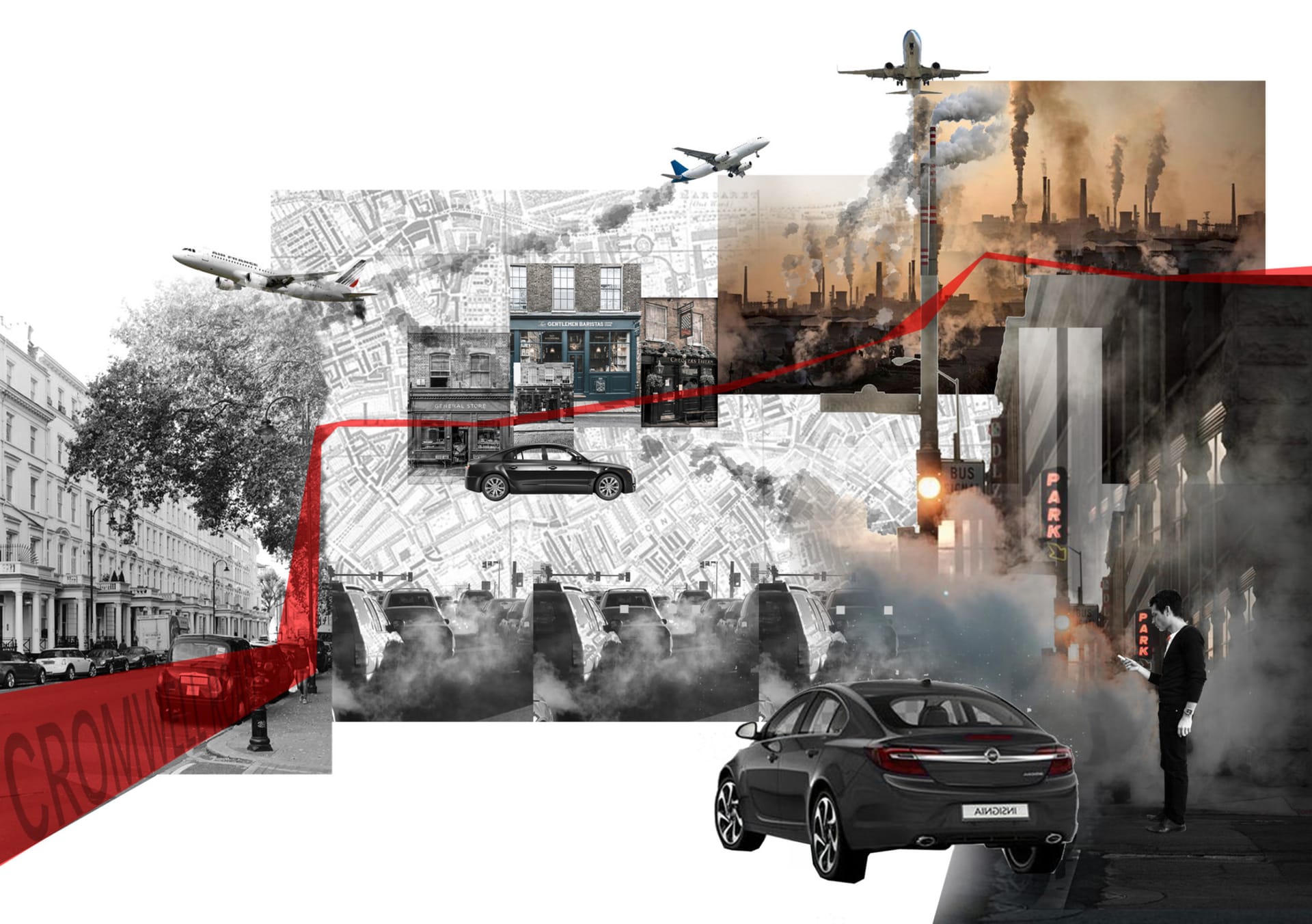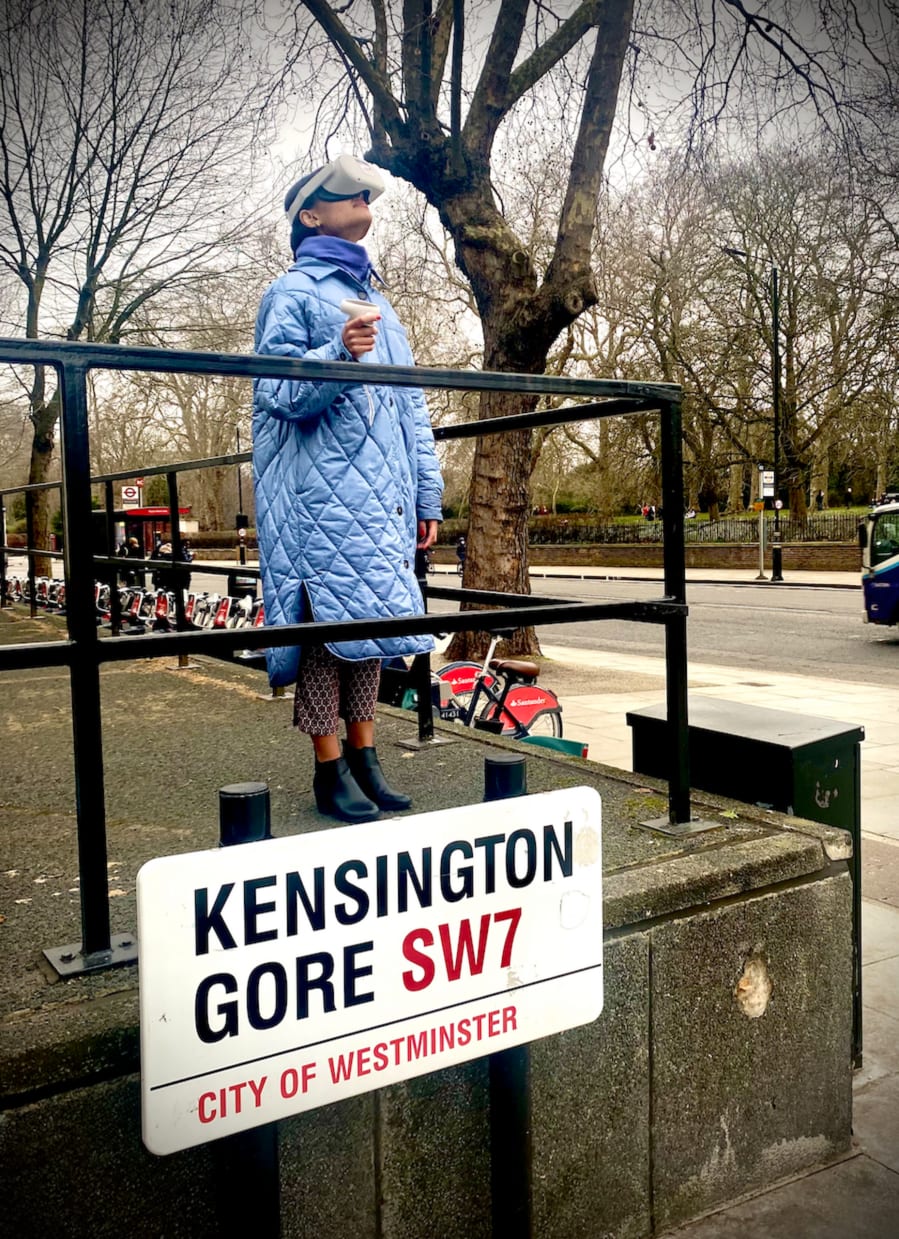Addressing climate change requires profound behaviour change, not only in consumer action, but as members of communities. AirAware is both an immersive VR experience and physical air purifying product that engage members of the public about the effects of air pollution and their role in it.
VR experience
Using virtual reality headsets and a video filmed in 360 degrees, the experience immerses people on the streets in the effects of pollution in the local area.
After signing our waiver form and reading our leaflet, people will be set up with a headset to participate in the experience, where they'll be guided about the impact of traffic in the local environment, statistics, and a brief bit of history. Afterwards, they'll be asked a series of questions to ascertain their feelings and future intentions.
Wearable product
Additionally to the VR experience, we're interested in future technologies that might change people's role in air pollution. We produced an idea for a wearable device that absorbs air pollution as people walk the streets. People can try this physical prototype and share their thoughts. This connection between virtual and physical helps to prompt interesting feedback.
Watch our immersive VR experience
Watch responses from the people we intercepted




